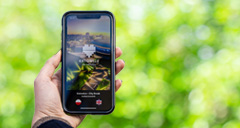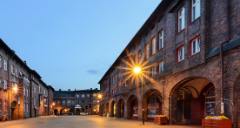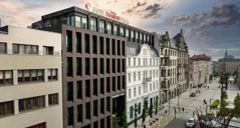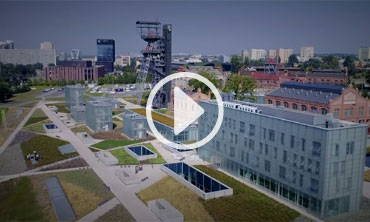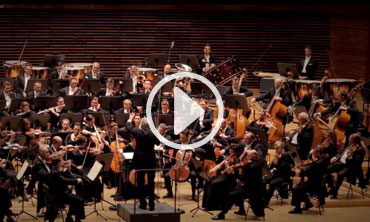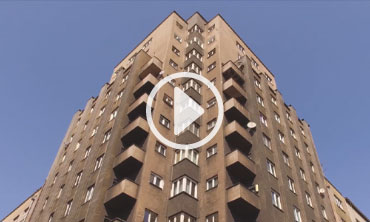KATOWICE – THE HEART OF THE METROPOLIS
Katowice, located in the southern part of Poland, is the capital of the country's first metropolis. It consists of 41 cities, with more than 2.5 million people.
Katowice is a well-connected city, near which the A1 and A4 highways intersect, allowing travel in all directions across Europe. Some of the cities in the metropolis are connected by the controlled-access highway named Drogowa Trasa Średnicowa, which runs through the center of Katowice, and the dense network of railway lines makes it possible to comfortably reach Prague, Vienna, Budapest, or Berlin in just a few hours. Located about 30 km north of the center of Katowice, in Pyrzowice, Katowice International Airport is one of the largest and most dynamically developing airports in the country. Moreover, within a 100 km radius, there are two other international airports – in Krakow and Czech Ostrava.
Kato Blues Faces
In Katowice music has long taken a special place. This very important aspect of culture in 2015 was appreciated by UNESCO, awarding Katowice the title of a creative city in the field of music. Katowice also has a huge share in the phenomenon of the Silesian blues.
On September 9th, in the heart of Katowice, at 13 Staromiejska Street, the exhibition "Kato Blues Faces" was opened, paying tribute to local artists associated with this music. Graphics, posters, photographs, and items related to the blues are presented here. The exhibition also has a strong multimedia character – you can see archival footage from concerts, music videos, and interviews with musicians. There are also regularly organized chamber concerts, meetings or jam sessions with the participation of the biggest stars of the Silesian blues.
- Blues music holds a special place in my heart. I remember from my youth that there was always an extraordinary atmosphere in the blues clubs in Katowice. Thanks to the exhibition, some of you will surely return to the memories of your youth, and the younger ones will have the chance to discover the beauty of this music and perhaps stay with it longer. - says Marcin Krupa, the mayor of Katowice.
The "Kato Blues Faces" project is another initiative carried out in connection with the title of European City of Science Katowice 2024. The exhibition is open from Tuesday to Sunday from 4:00 PM to 8:00 PM. Free admission.

KATOWICE CITY BREAK APP

The new Katowice City break app is now available. Visit and discover the beauty of our city.
Tourists visiting Katowice and our residents can take advantage of the new app – City Break, which after downloading to mobile devices will guide you through the most important tourist attractions of Katowice.
It allows you to get to know, among other things, selected works of Street Art, functionalist architecture on the Modernism Route, or to get involved in the post-industrial climate of the magical Nikiszowiec.
There is also no shortage of Katowice Beboks – users of the app are encouraged to have fun by exploring the urban space on the occasion of searching for these sympathetic creatures.
In addition to the standard audio guide function, users can also take part in quizzes to test their knowledge of the attractions they have visited.
The app is available free of charge on Android and iOS devices.
We invite you to download the free app and discover Katowice.
KATOWICE IMPLEMENTS THE SUSTAINABLE DEVELOPMENT GOALS
In 2015, the United Nations adopted a plan for world development until 2030. (AGENDA 2030). Representatives of the countries forming its structures developed 17 global sustainable development goals and indicated specific tasks to be fulfilled.
The plan is very ambitious and presents serious challenges for cities. Uncompleted tasks resulting from the Millennium Development Goals have been supplemented with new concepts developed during public consultations, in which many entities around the world were involved.
The overarching intention of the UN plan is to support the poorest and most vulnerable individuals.
The goals have been developed with respect for international law, the Universal Declaration of Human Rights, and international human rights treaties, as well as other strategic documents.
Recognizing the significant importance of this document, Katowice has taken on the UN challenge and is conducting a periodic analysis of its actions in terms of the 17 sustainable development goals. Its detailed conclusions can be traced HERE.
The example of Katowice proves that the implementation of the 17 sustainable development goals has a direct impact on improving living conditions in the city and is a real change, noticeable on a daily basis by all residents.
CENTRE OF NEW TECHNOLOGIES
The advantage of Katowice is its well-developed IT infrastructure and research and development sector. Katowice are a leader in the field of innovation and new technologies. They are also among the leading Polish cities that focus on the development of modern business sectors, including the regional office market, along with the modern office services industry.
KATOWICE GAMING AND TECHNOLOGY HUB
In Katowice's Nikiszowiec, on the site of the former KWK "Wieczorek," a gaming and technology hub, also called the "district of new technologies," will be established. This space will be allocated to companies from the gaming and e-sport industries, as well as entities from the technology sector. At the same time, the hub is also intended to foster collaboration between this business and the academic community.
The Pułaski Shaft buildings are historic structures with over a hundred years of history and valuable architectural features. The planned investment will give them a second life. There will be, among others, office and coworking spaces, recording studios, laboratories, IT infrastructure facilities, as well as conference rooms and educational spaces.
EU funding of over 309 million PLN was obtained for the construction of the Katowice gaming and technology hub.
BUSINESS EVENTS
The business tourism market is also something on which the City of Katowice is currently building its potential. Thanks to the excellent conference and hotel facilities, as well as the reputation that the city has gained after the organization of international events, often under the auspices of the UN (COP24, PRECOP, IGF2021, WUF11), interest in Katowice is huge.
This is where major business events take place, such as the European Economic Congress, the European Congress of Small and Medium-sized Enterprises or annual meetings of doctors of various scientific disciplines. The program of events does not lack concerts and cultural performances, as well as sports competitions attracting crowds of fans, including
e-sport fans who visit the annual Intel Extreme Masters finals in great numbers.




CULTURE ZONE
The architectural hallmark of the city, combining elements of Katowice's heritage and its contemporary aspirations, is the Culture Zone, located by the Spodek, on the site of a former coal mine. It is a unique place not only in Poland but throughout Europe. The magnificent buildings of the Polish National Radio Symphony Orchestra, the International Congress Centre with its green roof, the partially underground Silesian Museum, and the tallest building in the region—the KTW office complex—have been established here.
GREEN KATOWICE
A strong point of Katowice is its greenery. It is one of the greenest cities in Poland. Over 40% of its area is covered by forests, which, along with parks and green squares, provide an excellent place for recreation and relaxation. A true gem is the Las Murckowski (Murckowski Forest), where you can encounter 300-year-old natural monuments and unique species of plants and animals. Particularly popular among residents are the Dolina Trzech Stawów (Three Ponds Valley), the bathing area by the Morawa Pond, located on the border of Katowice and Mikołów – Starganiec, and the Silesian Park, reminiscent of New York's Central Park. These places encourage active recreation and gatherings with family or friends.
PROUD RESIDENTS
Katowice, calling themselves a city for a change, still hides many secrets. The best guides to the city's unconventional attractions and corners are the local residents, who are the best ambassadors of Katowice and its greatest asset. The engagement of the residents of Katowice activates changes in the city's space, making the capital of the Silesian Voivodeship one of the fastest-growing cities in Poland.
